
First lady or first gentleman is an unofficial title usually used for the spouse, and occasionally used for the offspring or other relative, of a non-monarchical head of state or chief executive. The term is also used to describe a person seen to be at the top of her profession or art.
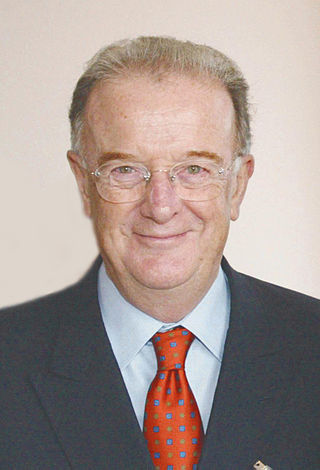
Jorge Fernando Branco de Sampaio was a Portuguese lawyer and politician who was the 18th President of Portugal from 1996 to 2006. Sampaio was a member of the Socialist Party, a party which he led between 1989 and 1992. He served as the Mayor of Lisbon from 1990 to 1995 and High-Representative for the Alliance of Civilizations between 2007 and 2013.

The Socialist Party is a social-democratic political party in Portugal. It was founded on 19 April 1973 in the German city of Bad Münstereifel by militants who were at the time with the Portuguese Socialist Action. The PS is a member of the Socialist International, Progressive Alliance and Party of European Socialists, and has nine members in the European Parliament within the Progressive Alliance of Socialists and Democrats group during the 9th European Parliament. It was the governing party of Portugal between November 2015 and April 2024, subsequently winning the 2019 and 2022 legislative elections.

The president of Portugal, officially the president of the Portuguese Republic, is the head of state and highest office of Portugal.
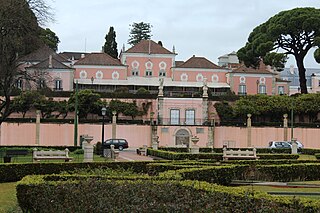
The Belém Palace, formally the National Palace of Belém,, is the current official residence of the president of the Portuguese Republic, the head of state of Portugal. Located in the Belém District of Lisbon, the palace's main façade fronts the Praça Afonso de Albuquerque, facing the Tagus River. A former residence of the Portuguese royal family, the Belém Palace complex is made up of various buildings, wings, courtyards, and gardens, built variously from the 18th to 21st centuries.

Marcelo Nuno Duarte Rebelo de Sousa is a Portuguese politician and academic. He is the 20th and current president of Portugal, since 9 March 2016. He is a member of the Social Democratic Party, though he suspended his party membership for the duration of his presidency. Rebelo de Sousa has previously served as a government minister, parliamentarian in the Assembly of the Portuguese Republic, legal scholar, journalist, political analyst, law professor, and pundit.

Maria de Belém Roseira Martins Coelho Henriques de Pina is a Portuguese politician who served as Minister of Health from 1995 to 1999, Minister for Equality from 1999 to 2000, and President of the Socialist Party from 2011 to 2014. She is informally known as Maria de Belém.
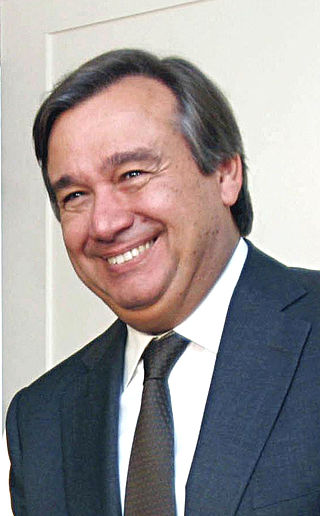
The 1995 Portuguese legislative election took place on 1 October. The election renewed all 230 members of the Assembly of the Republic.

The 1991 Portuguese legislative election took place on 6 October. The election renewed all 230 members of the Assembly of the Republic. There was a reduction of 20 seats compared with previous elections, due to the 1989 Constitutional revision.

The 1987 Portuguese legislative election took place on 19 July. The election renewed all 250 members of the Assembly of the Republic.

The 1985 Portuguese legislative election took place on 6 October. The election renewed all 250 members of the Assembly of the Republic.

Presidential elections were held in Portugal on 23 January 2011. The elections resulted in the re-election of Aníbal Cavaco Silva to a second term as President of Portugal. Turnout in this election was very low, where only 46.52% of the electorate cast their ballots. Cavaco Silva won by a landslide winning all 18 districts, both Autonomous regions of Azores and Madeira and 292 municipalities of a total of 308.
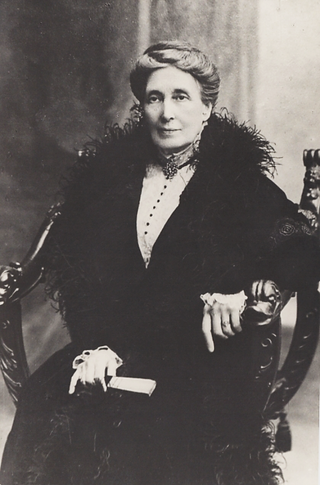
Lucrécia Augusta de Brito de Berredo Furtado de Melo Arriaga was the wife of Manuel de Arriaga, the first President of the Portuguese Republic and was, thus, the first First Lady of Portugal from 1911 to 1915, when her husband resigned from the post.

Maria Alves da Silva Cavaco Silva is the wife of Aníbal Cavaco Silva, the 19th President of the Portuguese Republic and, as such, was the First Lady of Portugal from 2006 until 2016.
Events in the year 1996 in Portugal.

Presidential elections were held in Portugal on 24 January 2016. The election chose the successor to the President Aníbal Cavaco Silva, who was constitutionally not allowed to run for a third consecutive term.

Presidential elections were held in Portugal on 24 January. The incumbent President, Marcelo Rebelo de Sousa, was reelected for a second term.
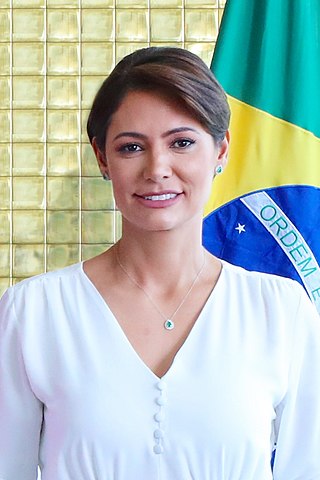
Michelle de Paula Firmo Reinaldo Bolsonaro is a former First Lady of Brazil from 2019 to 2022, being the third wife of the 38th President of Brazil, Jair Bolsonaro.
































